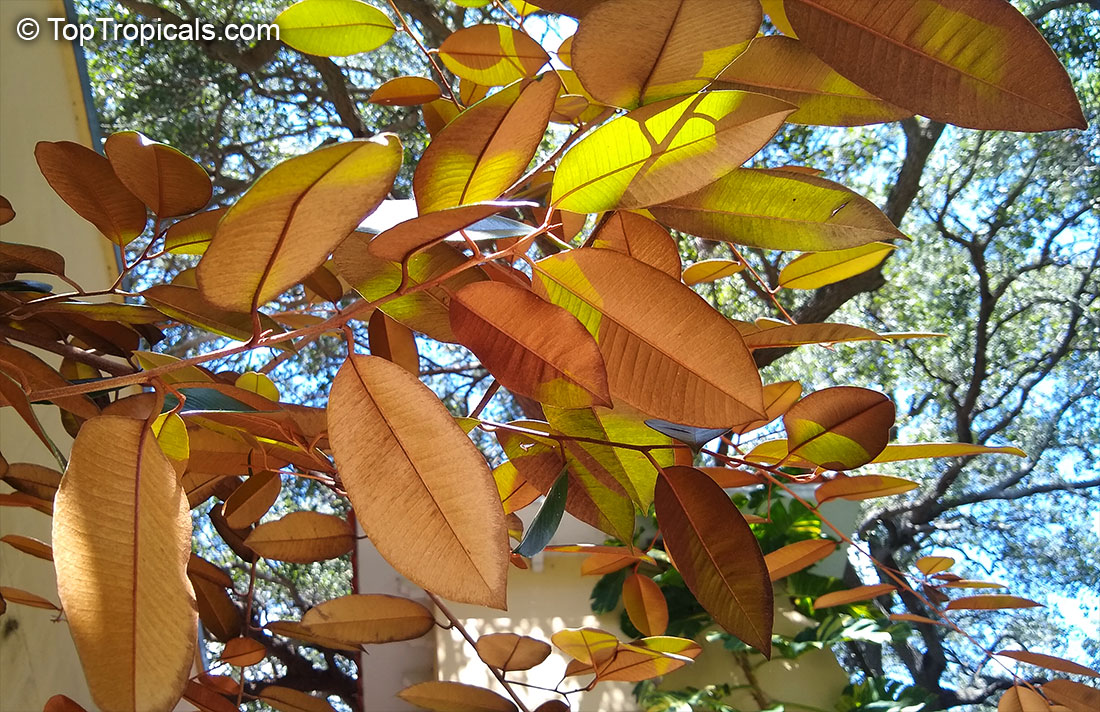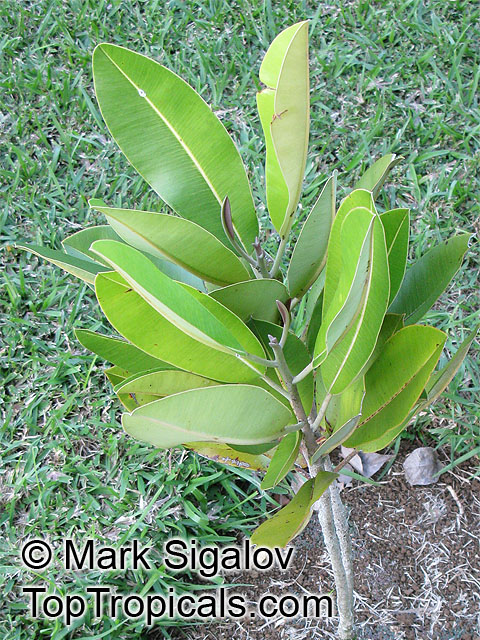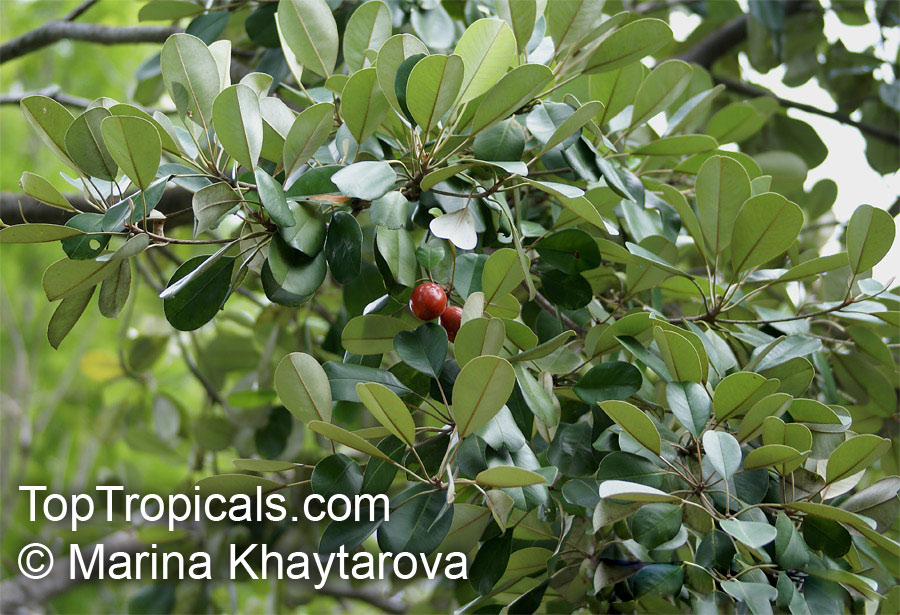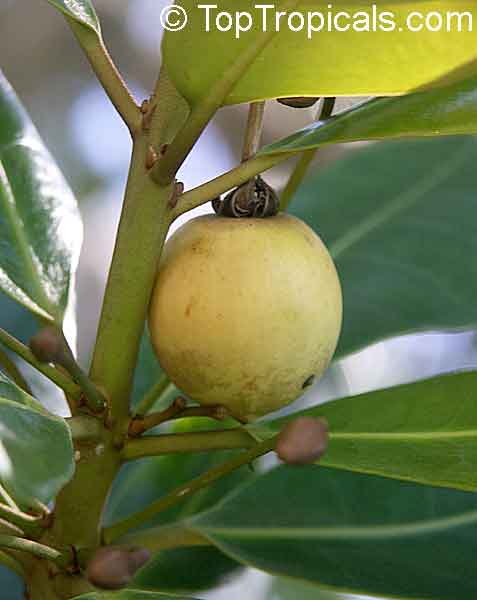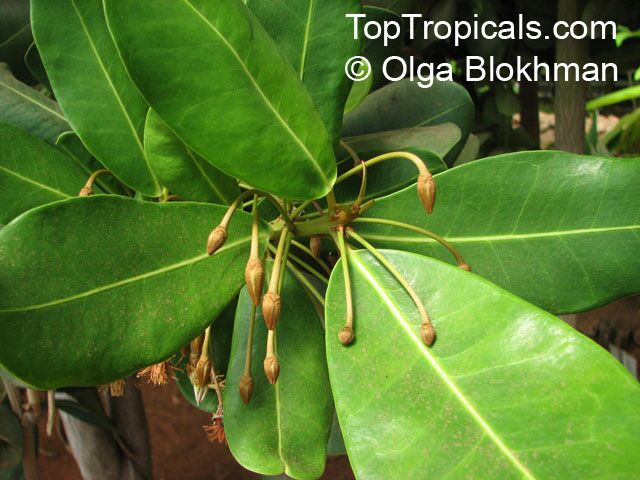Sapotaceae - Botanical Family
Top Tropicals Plant Encyclopedia
| Number of plants found: 28 | Next | 
|
Go to page: | 1 | 2 | 3 |
Botanical names: Argania spinosa, Sideroxylon spinosus
Common name: Argan
Family: Sapotaceae
Origin: Morocco






Argania spinosa is a thorny tree from the arid and semi-arid regions of Morocco and Algeria.
Argan oil is used for dipping bread, on couscous, salads, and similar uses. The unroasted oil is traditionally used as a treatment for skin diseases, and has become favoured by European cosmetics manufacturers.
Botanical name: Chrysophyllum argenteum
Common names: Caimito de mono, Bastard Redwood
Family: Sapotaceae
Origin: South America






The plant is harvested from the wild for its edible fruit, wood and medicinal uses. Edible milky fruit. Leaves very variable in shape.
Botanical names: Chrysophyllum cainito, Achras caimito
Common names: Caimito, Star Apple, Satin Leaf
Family: Sapotaceae
Origin: West Indies





Chrysophyllum cainito, or Caimito, is a beautiful, large tree which can reach heights of more than twenty feet. It is native to the West Indies, but is grown across the world in areas with tropical and subtropical climates. It can be found in the USDA Zone 10-11, and some varieties have been observed to have a cold hardiness at least to the low 30s for short periods. When planted in containers and grown in colder regions, Caimito should be taken inside during the winter. To ensure healthy growth, Caimito should be grown in full sun and require regular watering.
The fruit of the Caimito tree is edible, with a mild grape-like flavor. Not only is it delicious, but it can also be quite nutritious. Caimito is high in Vitamin C and contains several other vitamins and minerals that are important for a healthy diet.
For those looking to embrace gardening and the outdoors, Caimito is an excellent choice. Not only is it beautiful, but it is also productive. The fruit can be eaten fresh, or it can be cooked and used in jams and other applications.
7 gal pot. More developed root system, thicker trunk and branches. Plant height depends on growing season and variety. Dwarf varieties are slow growers and may be shorter. Contact us for exact size description if size/height matters to you. 7 gal plants may be shipped separately from other items by Ground service due to large size. See here time in transit (business days, excluding Sat-Sun!)
Recommended Fertilizer: SUNSHINE C-Cibus - Crop Nutrition Booster
SUNSHINE-Honey - sugar booster
Botanical name: Chrysophyllum gonocarpum
Common name: Guatambu-De-Leite
Family: Sapotaceae
Origin: Tropical America




Native to tropical America, Chrysophyllum gonocarpum is a small tree that grows to a height of 10-20 feet, making it an ideal choice to plant as a small specimen or as an ornamental tree when space is limited. It has a short trunk and a dense, round canopy.
The leaves of Chrysophyllum gonocarpum are a dull green, spirally arranged, and are 2-4 cm long and 1-1.5 cm wide. The flowers are small and white, appearing in clusters. The fruits that follow are yellow-green, subglobular and covered in grooves, resembling a miniature lime. The flesh of the fruits are fragrant and sweet.
Chrysophyllum gonocarpum enjoys full sun, with some shade in the warmer months and requires regular watering. Also known as Guatambu-De-Leite, this small tree is hardy in USDA Zones 9-11 and can flourish in coastal areas, as it is tolerant of salt spray.
For those who live in cooler regions and would like to grow Chrysophyllum gonocarpum, it can be grow in a container in a bright location indoors. When brought indoors, regular watering is key, as well as good drainage. Pruning can also be done to keep the tree in a more compact shape and to maintain a neat appearance. It is also important to keep the soil evenly moist, but not soggy, as over-watering can lead to root-rot. Another factor to consider when growing Chrysophyllum gonocarpum in a container is periodic feeding with a slow-release fertilizer.
Recommended Fertilizer: SUNSHINE C-Cibus - Crop Nutrition Booster
SUNSHINE-Honey - sugar booster
This item can not be shipped. Pick up only. We can provide local delivery around Ft. Myers or Sebring, Florida. Contact us for an estimate. Non-pickup orders are subject to restocking fees.
Last one
Botanical name: Chrysophyllum imperiale
Common name: Chrysophyllum
Family: Sapotaceae
Origin: South America






Botanical name: Chrysophyllum oliviforme
Common names: Satinleaf, Satin Leaf
Family: Sapotaceae
Origin: Caribbean




This is a relative of Star Apple (Caimito - Chrysophyllum cainito) which is a popular fruit, well known among the people of the Caribbean. The fruit of the Satinleaf is much smaller than the Caimito, just a little dark purple berry, about an inch in diameter. Satinleaf is an ornamental medium-sized tree with a mature height of up to 30 feet and distinctive foliage: shiny olive on top, silky silvery gold underneath. You might use one in your backyard as a shade tree, an easier-to-manage alternative to live oak.
Botanical name: Labourdonnaisia glauca
Common name: Bois de Natte à Grandes Feuilles
Family: Sapotaceae
Origin: Mauritius







Endemic to Mauritius and are found in the primary forests.
Leaves are rather coriaceous and large also very decorative. The upper surface of the leaf blade is green while the lower surface is of a silver grey color.
Botanical name: Madhuca longifolia
Common names: Indian Butter Tree, Ippe, Mahua Butter Tree, Moah Tree, Mowra Butter Tree
Family: Sapotaceae
Origin: India










Native to India, Madhuca longifolia (Indian Butter Tree) is a beautiful big tree that can grow taller than 20 ft. It flourishes in full sunlight or semi-shade with moderate water and is known for its fragrant white or off-white flowers. It is a great choice for attracting butterflies, hummingbirds, and other pollinators. This ethnomedical plant is an important spice or herb in Ayurveda, the traditional Indian medicine.
In addition to offering beautiful ornamentation, the Indian Butter Tree produces edible fruits. As its name suggests, the fruits of this plant are the source of illipe butter, which is loaded with healthy fats, vitamins, and minerals such as potassium and magnesium. The yellow-sweat fruits contain one or two seeds and can be eaten raw or cooked. It can manage to yield hundreds of fruits a year.
Madhuca longifolia is grown in USDA Zone 9-11. In cold regions, the plant can be grown in a pot with well-draining potting soil, stored in a sheltered place, and watered regularly. It is also advisable to protect the plant from strong winds and intense sun by placing it in semi-shade and pruning trees regularly to prevent it from growing too big for the pot.
Botanical names: Manilkara bidentata, Mimusops balata, Achras balata
Common names: Ausubo, Balata, Mimusops, Autranella, Balata Rouge, Assapookoo
Family: Sapotaceae
Origin: Tropical America









Large, and very long lived tropical tree native to wet regions. The leaves are alternate, elliptical, entire, and 10-20 cm long. The flowers are white, and are produced at the beginning of the rainy season. The fruit is a yellow berry, 3-5 cm in diameter. Fruits are edible and eaten fresh, the more common use of the tree is as a commercial timber.
The wood is very poisonous. This species yields a gutta-percha. The sap (balata) becomes solid and somewhat crumbling at ordinary temperature, it softens at 120.2F, and can be molded like gutta-percha.
| Next |  |
Use link to repeat this search:
https://toptropicals.com/cgi-bin/garden_catalog/cat.cgi?search_op=and&keyword_op=and&language=e&family=Sapotaceae&number=10
&no_change_lang=1&user=tt&sale=1&first=0






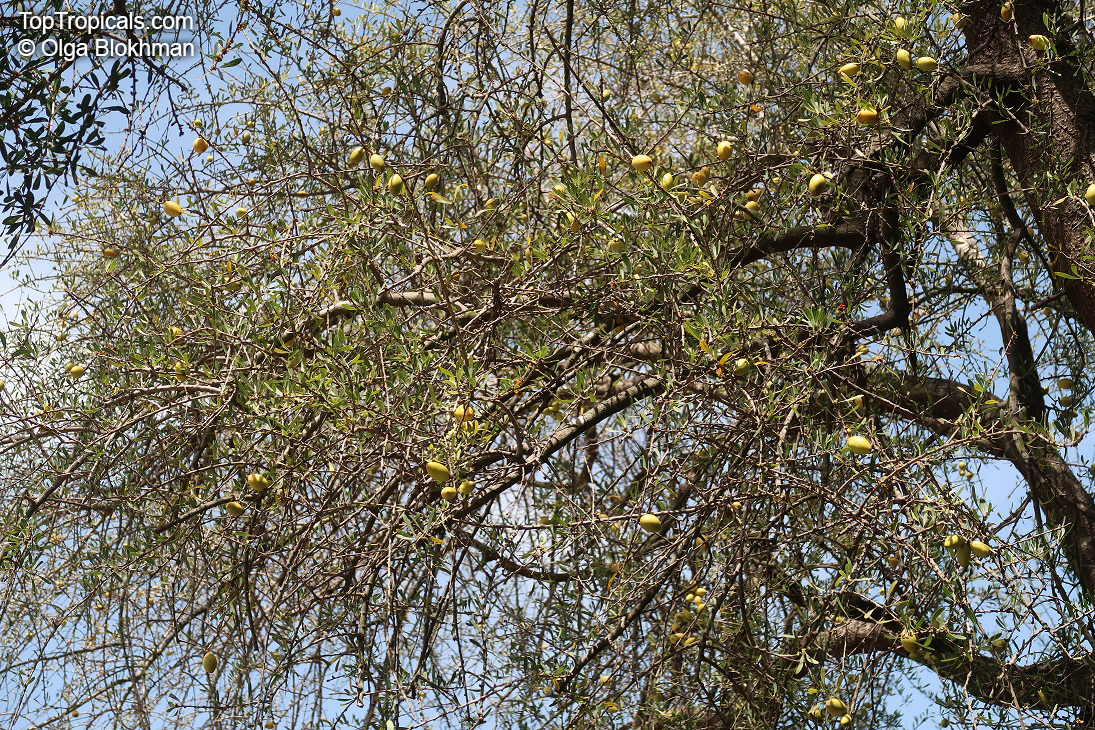








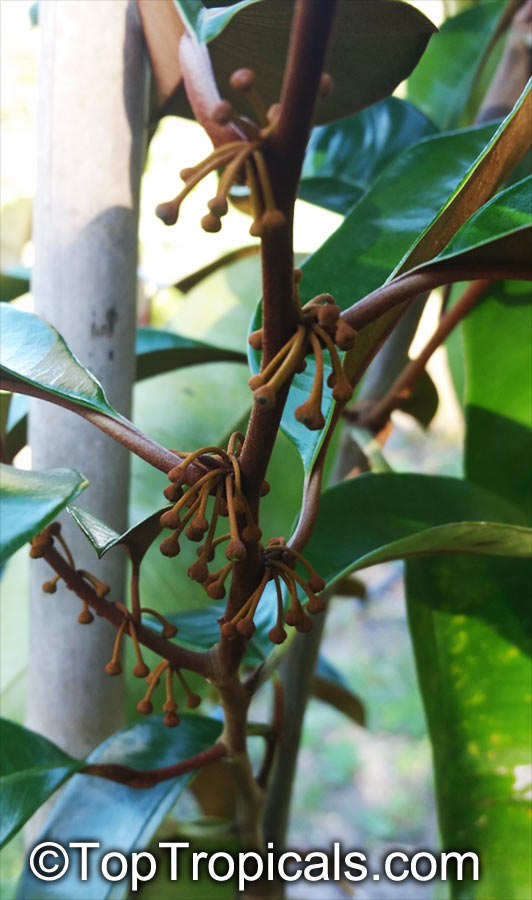













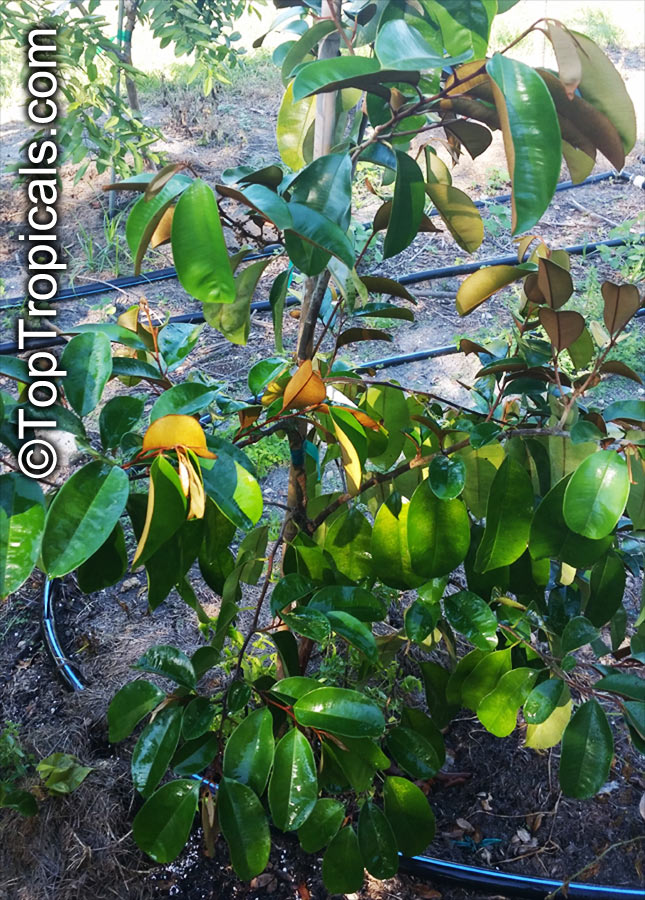








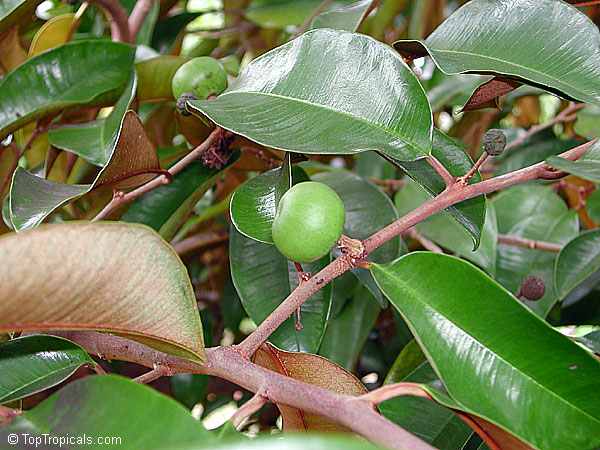








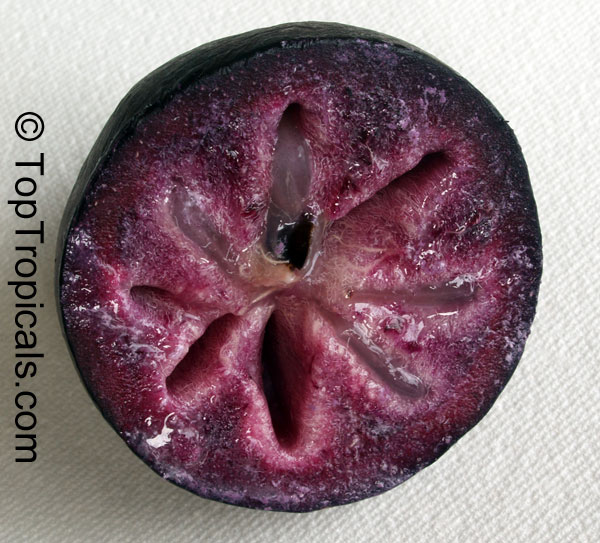

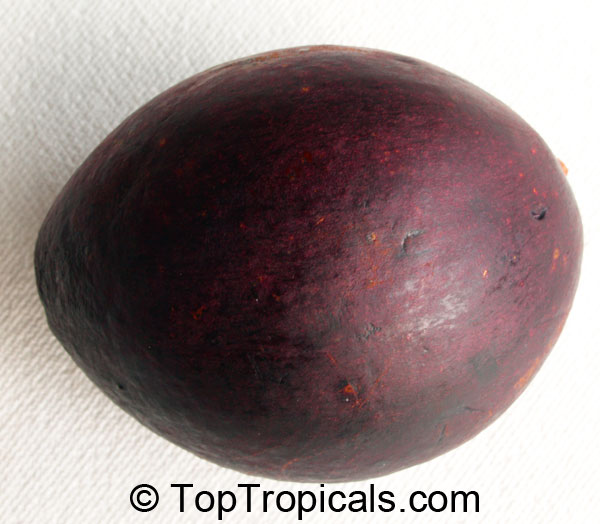




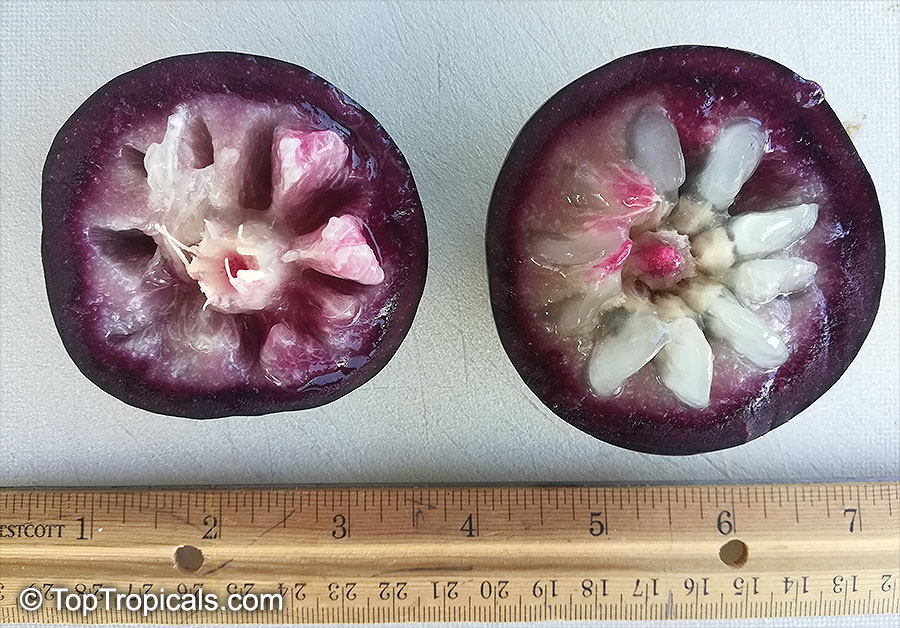
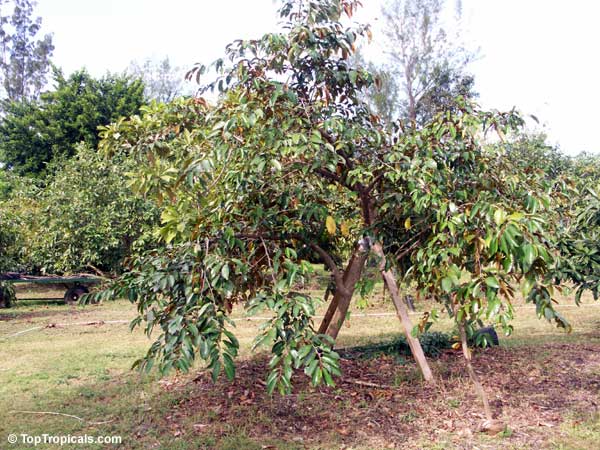








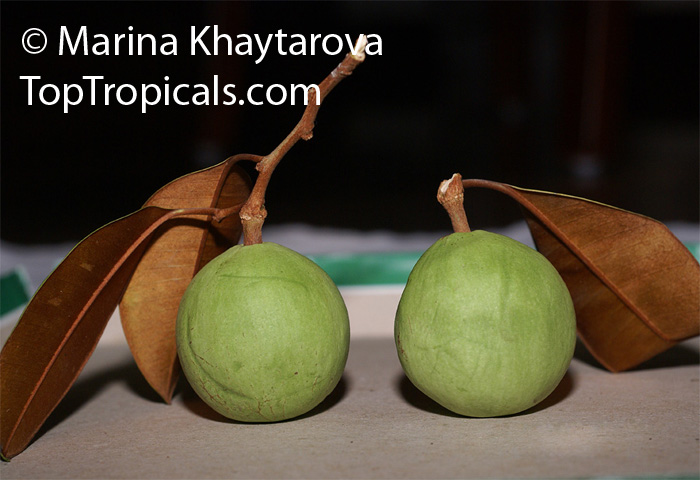







 SUNSHINE C-Cibus (NPK 2-2-4) - Crop Booster for every watering.
SUNSHINE C-Cibus (NPK 2-2-4) - Crop Booster for every watering.  SUNSHINE C-Cibus (NPK 2-2-4) - Crop Booster for every watering.
SUNSHINE C-Cibus (NPK 2-2-4) - Crop Booster for every watering. 















